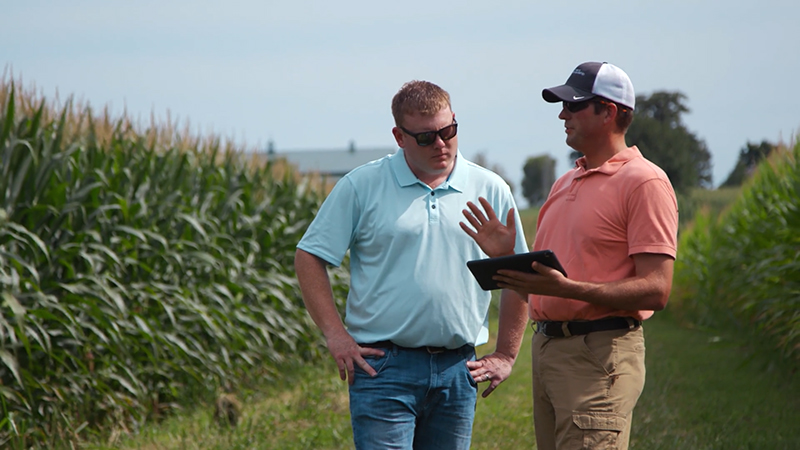4Rs on the Farm – How can fertilizer practice change work for your farmer customers?
Fertilizer is one of the biggest input costs in any farming operation. Properly managed fertilizers support cropping systems that provide economic, social, and environmental benefits. On the other hand, poorly managed nutrient applications can decrease profitability and increase nutrient losses, potentially degrading water and air.
4R Nutrient Stewardship provides a framework to achieve in-field goals, such as increased production and profitability, enhanced environmental protection, and improved sustainability. The 4R concept incorporates practices that use the right fertilizer source at the right rate, at the right time, and in the right place.
Growers consistently rate cost as a major factor to consider when deciding whether to implement new practices in a field. And 4R fertilizer management practices are no exception. The Fertilizer Institute gathered data from farmers who have implemented the 4Rs to calculate their environmental and economic returns. The website 4Rfarming.org has case studies detailing these returns on farms from across the country producing a variety of crops.
Illinois corn farm sees 34 percent emissions decreases while also lowering cost per acre
This family farm located in central Illinois is managed by a young farmer who was an early adopter of the 4Rs. Seeing the benefits of these practices and willing to make investments in the farm, the family made advanced leaps in adoption of 4R practices and saw immediate returns.

When moving from basic to advanced 4R practices the total cost per acre to implement 4R practices decreased due to reduced fertilizer and equipment costs. Operation cost of an in-season sprayer and use of a smaller tractor for in-season nitrogen injection also lowered costs.
The time spent per acre implementing 4R practices was 0.21 hours per acre for basic practices compared to 0.22 with advanced practices, due to more fertilizer applications per season.
Changing from basic to more advanced 4R practices, the farmer decreased cost per acre between $16.49 and $25.31, while also decreasing CO2 equivalent greenhouse gas emissions by 34.7 percent.
Western Lake Erie Basin corn farm successfully removes fall nitrogen application
Located in the Western Lake Erie Basin, this family farm has used strip-till since 2010. While adopting some practices quickly the farm has taken the opportunity to try more complex practices like variable rate N, P, and K applications through NRCS programs.
Cost per acre for fertilizer practices decreased as basic to advanced 4R practices were implemented. A portion of the decrease in cost can be attributed to a decrease in fertilizer cost and the remainder to the difference in fertilizer application cost within the removal of nitrogen from fall applications.
Changing from basic to more advanced 4R practices, the farmer decreased cost per acre by $101.11 while also decreasing CO2 equivalent greenhouse gas emissions by 19 percent. The differences in cost per acre are from changing the formula of the fall strip till application to remove N, fewer total applications, and lower nutrient rates.
Sandy soils and environmental concerns drive the advanced 4R practice adoption on Virginia corn farm
Planning and coordination are the cornerstones of this east central Virginia farming operation. Sandy soils and environmental concerns have driven the advanced practice adoption of this multi-generational farm for many years. Working very closely with the local retail outlet to ensure proper fertilizer blends that incorporate essential micronutrients helps improve the total soil health of the farm. Fertilizer formulas are adjusted based on a strict rotational soil sampling results as well as in-season tissue sampling.
The constant cost benefit relationship of maintaining advanced nutrient stewardship practices, continues to show positive results for this operation on an annual basis. The farm continues to explore the added benefits of micro and secondary nutrients.
On this farm where advanced practices have been implemented for many years, the reduction in CO2e emissions per bushel is 14 percent compared to the use of basic practices on the same fields.
More data on these case studies as well as others looking at different cropping systems in various states is available at 4Rfarming.org.